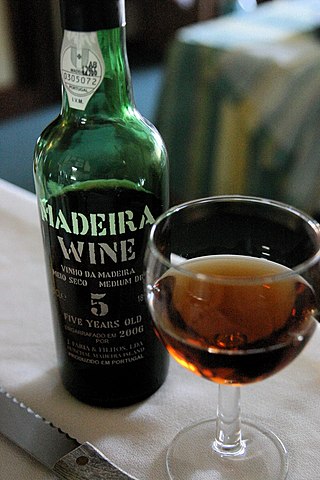
Madeira is a fortified wine made on the Portuguese Madeira Islands, off the coast of Africa. Madeira is produced in a variety of styles ranging from dry wines which can be consumed on their own, as an apéritif, to sweet wines usually consumed with dessert. Cheaper cooking versions are often flavoured with salt and pepper for use in cooking, but these are not fit for consumption as a beverage.
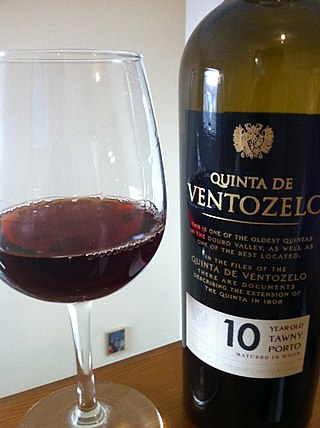
Port wine is a Portuguese fortified wine produced in the Douro Valley of northern Portugal. It is typically a sweet red wine, often served with dessert, although it also comes in dry, semi-dry, and white varieties.
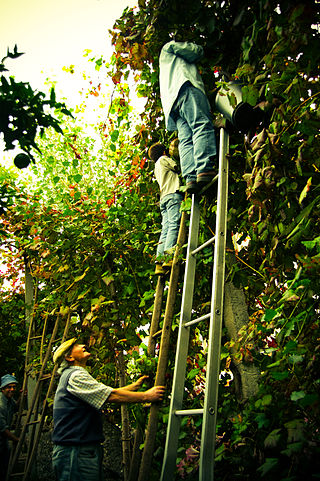
Vinho Verde refers to Portuguese wine that originated in the historic Minho province in the far north of the country. The modern-day 'Vinho Verde' region, originally designated in 1908, includes the old Minho province plus adjacent areas to the south. In 1976, the old province was dissolved.

New World wines are those wines produced outside the traditional winegrowing areas of Europe and the Middle East, in particular from Argentina, Australia, Canada, Chile, Mexico, New Zealand, South Africa and the United States. The phrase connotes a distinction between these "New World" wines and those wines produced in "Old World" countries with a long-established history of wine production, essentially in Europe, most notably: France, Italy, Germany, Spain and Portugal.

Portuguese wine was mostly introduced by the Romans and other ancient Mediterranean peoples who traded with local coastal populations, mainly in the South. In pre-Roman Gallaecia-Lusitania times, the native peoples only drank beer and were unfamiliar with wine production. Portugal started to export its wines to Rome during the Roman Empire. Modern exports developed with trade to England after the Methuen Treaty in 1703. From this commerce a wide variety of wines started to be grown in Portugal. And, in 1758, one of the first wine-producing regions of the world, the Região Demarcada do Douro was created under the orientation of Marquis of Pombal, in the Douro Valley. Portugal has two wine-producing regions protected by UNESCO as World Heritage: the Douro Valley Wine Region and Pico Island Wine Region. Portugal has a big variety of local kinds, producing a very wide variety of different wines with distinctive personality.
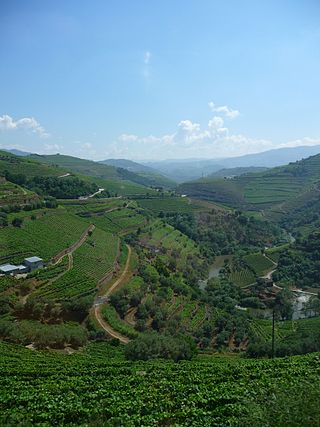
Douro is a Portuguese wine region centered on the Douro River in the Trás-os-Montes e Alto Douro region. It is sometimes referred to as the Alto Douro, as it is located some distance upstream from Porto, sheltered by mountain ranges from coastal influence. The region has Portugal's highest wine classification as a Denominação de Origem Controlada (DOC) and is registered as a Protected Designation of Origin under EU and UK law, and as a Geographical Indication in several other countries through bilateral agreements. While the region is best known for Port wine production, the Douro produces just as much table wine as it does fortified wine. The non-fortified wines are typically referred to as "Douro wines".
South African wine has a history dating back to 1659 with the first bottle being produced in Cape Town by its founder and gouverner Jan van Riebeeck. Access to international markets led to new investment in the South African wine market. Production is concentrated around Cape Town and almost exclusively located within the Western Cape province, with major vineyard and production centres at Constantia, Paarl, Stellenbosch and Worcester.

Spanish wine includes red, white, and sparkling wines produced throughout the country. Located on the Iberian Peninsula, Spain has over 1.2 million hectares planted in wine grapes, making it the most widely planted wine-producing nation, but the second largest producer of wine in the world, behind Italy and ahead of France and the United States. This is due, in part, to the very low yields and wide spacing of the old vines planted on the dry soils found in some of the Spanish wine regions. The country is ninth in worldwide consumption with Spaniards drinking, on average, 21.6 litres per person a year. The country has an abundance of native grape varieties, with over 400 varieties planted throughout Spain, though 88 percent of the country's wine production is from only 20 grapes — including the reds Tempranillo, Bobal, Garnacha, and Monastrell; the whites Albariño, Airén, Verdejo, Palomino, and Macabeo; and the three Cava grapes Parellada, Xarel·lo, and Macabeo.

The United Kingdom is a major consumer of wine, although a minor grower and producer. Wine production in the UK has historically been perceived as less than ideal due to the cold climate, but warmer summers and grapes adapted to these conditions have played a role in increasing investment and sale of wines. Most is English sparkling wine, from vineyards across Southern England and sparkling wine from Wales where the climate is warmer than that of northern areas. Vineyards are becoming more commonplace in counties such as Essex, Sussex and Kent, where more varieties of wine can be produced due to the drier and warmer climate.

The modern Indian Wine market is small but growing; annual per capita consumption of wine in the country is a mere 9 milliliters, approximately 1/8000th that of France. The main reason for this can be attributed to the fact that Indians preference for hard liquor and beer boasts nearly 98% of market share whereas wine with low ABV only has 2% market share. The viticulture in India has a long history dating back to the time of the Indus Valley civilization when grapevines were believed to have been introduced from Persia. Winemaking has existed throughout most of India's history but was particularly encouraged during the time of the Portuguese and British colonization of the subcontinent. The end of the 19th century saw the phylloxera louse take its toll on the Indian wine industry followed by religious and public opinion moving towards the prohibition. Following the country's independence from the British Empire, the government encouraged vineyards to convert to table grape and raisin production. In the 1980s and 1990s, a revival in the Indian wine industry took place as international influences and the growing middle class started increasing demand for the beverage. By the turn of the 21st century, demand was increasing at a rate of 20-30% a year. The city of Nashik in the state of Maharashtra is called the "Wine Capital of India."

The history of French wine, spans a period of at least 2600 years dating to the founding of Massalia in the 6th century BC by Phocaeans with the possibility that viticulture existed much earlier. The Romans did much to spread viticulture across the land they knew as Gaul, encouraging the planting of vines in areas that would become the well known wine regions of Bordeaux, Burgundy, Alsace, Champagne, Languedoc, Loire Valley and the Rhone.

Bucelas is a Portuguese wine-region located in the Lisboa wine-region. The region has Portugal's highest wine classification as a Denominação de Origem Controlada (DOC). Located south of the Arruda DOC, the region is noted for its potential for cool fermentation white wine production. Vineyards in the area are planted on predominantly loam soils. The white wines of Bucelas became widely popular during the Elizabethan era in England and again during the Victorian age. In London the wines were sometimes described as Portuguese hock because of their similarities to the German Rieslings from the Rhine. Urban sprawl in the 20th century has drastically reduced viticulture in the area, located north of the Portuguese capital city, Lisbon.

Carcavelos is a Portuguese wine region centered on the Carcavelos municipality in Estremadura region and includes land near the cities of Cascais and Oeiras. The region has Portugal's highest wine classification as a Denominação de Origem Controlada (DOC). Located at the very southern tip of the Estremadura region, the region has a long winemaking history dating back to the 18th century when Sebastião José de Carvalho e Melo, Marquis of Pombal owned vineyards here. The region is known for its fortified wine production, creating off dry, topaz colored wines that have nutty aromas and flavors. While once a thriving wine region, world-renowned in the 19th century for its tawny colored fortified wine, in the modern era Carcavelos has been devastated by real estate development in the suburbs of the capital city of Lisbon and nearby coastal city of Estoril.

The early history of the South African wine industry can be traced to the founding of a supply station at the Cape of Good Hope by the Dutch East India Company. Jan van Riebeeck was given the task of managing the station and planting vineyards to produce wine and grapes in the Wijnberg ; that could be used to ward off scurvy for sailors continuing on their voyages along the spice route. In 1685, another Cape Governor, Simon van der Stel, purchased a large 750-hectare (1,900-acre) estate, founding what later became the world-renowned Constantia wine estate. In the 19th century, South Africa fell under British rule which proved lucrative for the wine industry as South African wine flowed into the British market. This prosperity lasted until the 1860s when the Cobden–Chevalier Treaty signed by the Palmerston government and France reduced the preferential tariffs that benefited South African wine in favor of French wine exports.

The Douro Wine Company was a government oversight organization established by the Portuguese Prime Minister Sebastião José de Carvalho e Melo, Marquis of Pombal to regulate the trade and production of Port wine. Established in 1756, one of the first official duties of the company was the delineation of the boundaries of the Douro wine region. This act essentially made the Douro the world's first regional appellation. While the boundaries of the Chianti and Tokaji wine regions were outlined in 1716 and 1737, respectively, neither of these regions were "technically" appellations in the sense of being subjected to continued government control and regulations. Under their charter, Pombal invested an immense amount of control in the Douro Wine Company to regulate all exports of Port, set production quantities limits, fix maximum and minimum prices for grapes and to serve as sole arbitrator in any disputes between vine growers and Port shippers. In 1761, the company was further granted a monopoly on the sale of brandy which was used in the fortification process of Port winemaking. The Douro Wine Company continued to operate to 1833. Today, many of it functions have been deregulated with the Instituto dos Vinhos do Douro e do Porto or being the official regulating body of Port wine and Douro table wine production.
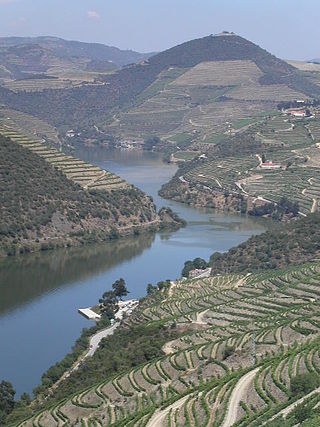
The Quinta classification of Port vineyards in the Douro is a system that grades the terroir and quality potential of vineyards in the Douro wine region to produce grapes suitable for the production of Port wine. In Portuguese, a quinta is a wine producing estate, which can be a winery or a vineyard. While other wine classification systems may classify the winery, the Douro quinta classification is based upon the physical characteristics of the vineyard. The classification system is run by the Instituto dos Vinhos do Douro e Porto (IVDP) and shares some similarities to the classification of Champagne vineyards in that one of the purposes of the system is to ensuring that vineyards producing grapes with the highest quality potential receive a high price. A secondary function of the quinta classification is the establishment of permitted yields for production. Quintas with a higher classification are permitted to harvest more grapes than a vineyard that received a lower classification.
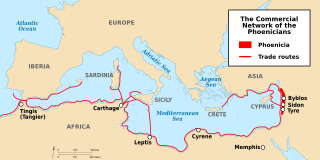
The culture of the ancient Phoenicians was one of the first to have had a significant effect on the history of wine. Phoenicia was a civilization centered in current day Lebanon. Between 1550 BC and 300 BC, the Phoenicians developed a maritime trading culture that expanded their influence from the Levant to North Africa, the Greek Isles, Sicily, and the Iberian Peninsula. Through contact and trade, they spread not only their alphabet but also their knowledge of viticulture and winemaking, including the propagation of several ancestral varieties of the Vitis vinifera species of wine grapes.
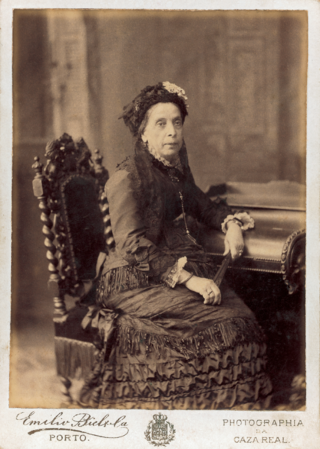
Antónia Adelaide Ferreira, often referred to in Portugal as "Ferreirinha", was a Portuguese businesswoman. She is known for leadership in the cultivation of port wine and for the winemaking innovations she introduced to Portugal.
Donzelinho branco is a white Portuguese wine grape variety that is classified as one of the "Very Good" varieties authorized to be used in Port wine production. While rarely seen as a varietal wine, Donzelinho branco is a permitted variety in the white blends of several northern Portuguese wine regions including the Denominação de Origem Controlada (DOC) of Douro and Trás-os-Montes and the Vinho Regional (VR) wines of Duriense and Transmontano.
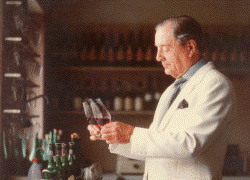
Fernando Nicolau de Almeida (1913–1998) was a pioneering Portuguese oenologist, best known for developing the Barca Velha red wine, one of the most expensive wines in Portugal.
























